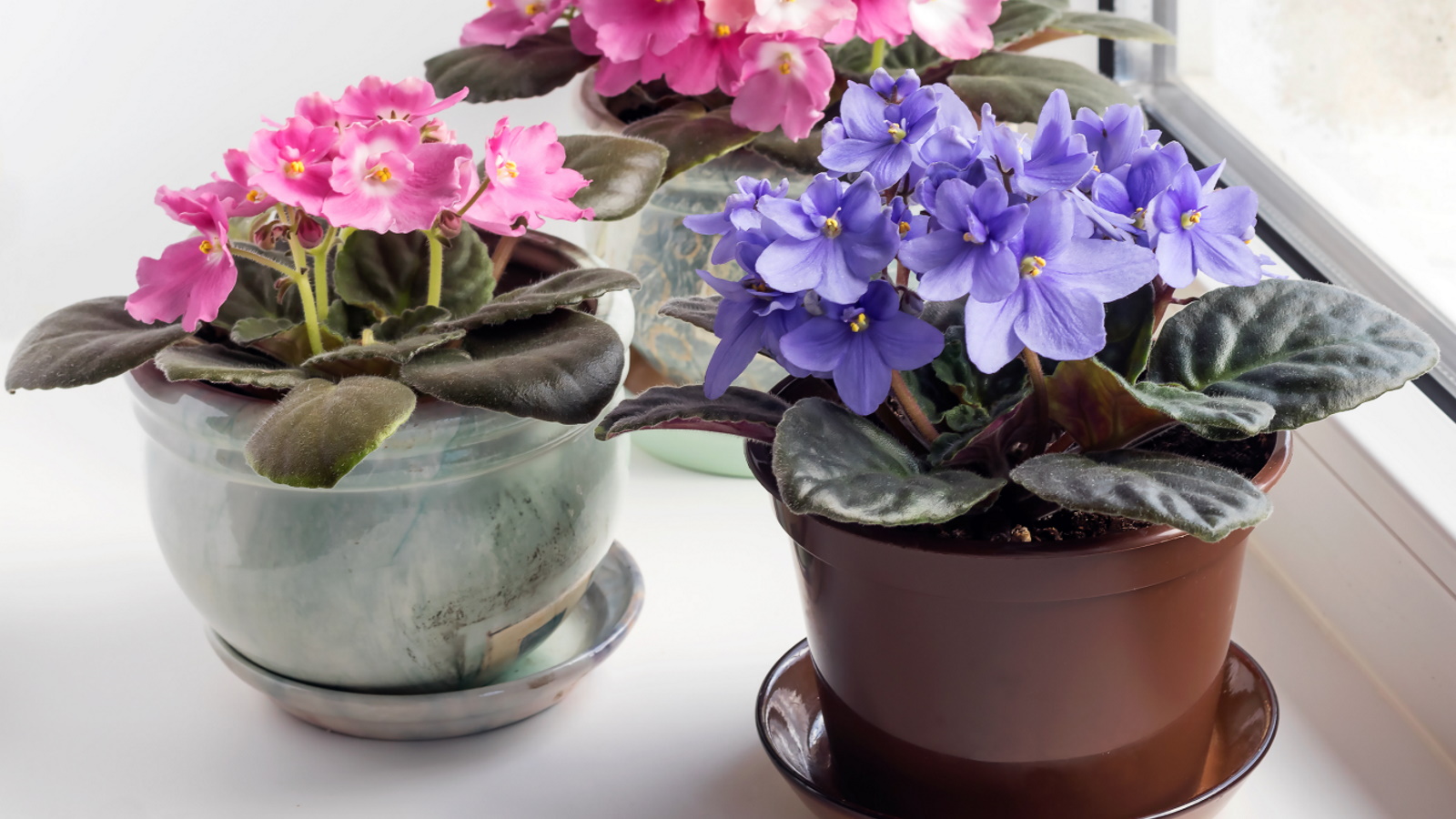
An easy way to brighten your home is by growing indoor plants that flower all year round, and among the best indoor flowering plants are African violets. Their compact, prolific foliage and rosettes of vibrant flowers are a popular choice for houseplant lovers wanting lasting indoor blooms.
Also known as Saintpaulia, African violets have multiple varieties offering different color flowers. For example, Saintpaulia 'Red' blooms a red-tinted purple shade while Saintpaulia 'Top Dark Blue' provides the classic, deep violet color.
African violets stay quite small, growing up to six inches tall. They have a slow growth rate but will reward you with blooms that last weeks at a time throughout the year, provided they have optimal conditions and care.
These are easy indoor plants to care for and will catch the attention of any visitors you have. We have gathered expert tips to help you care for your African violets and keep them blooming.
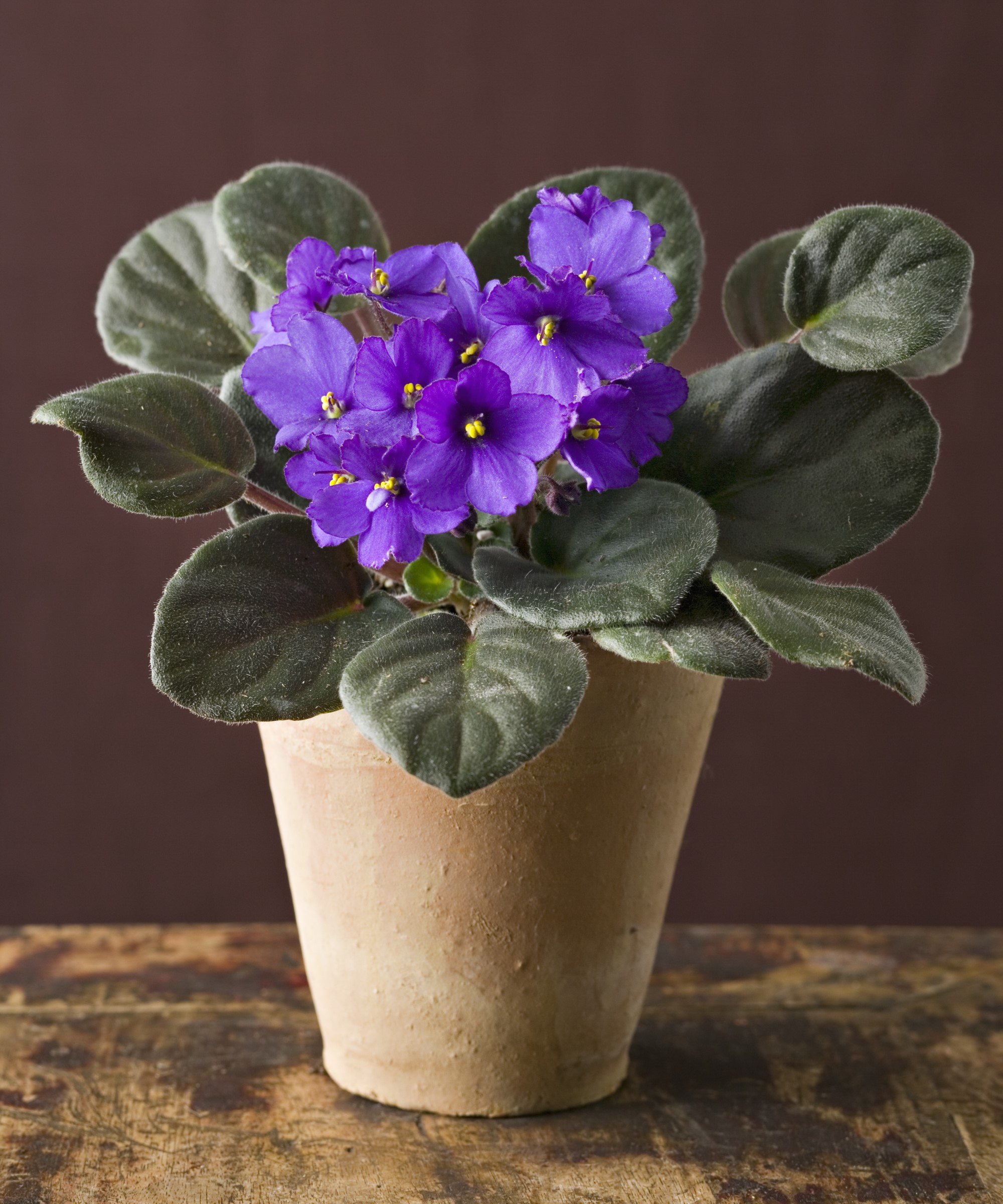
5 expert tips to keep your African violets blooming
The cluster blooms of African violets can add a pop of color to your houseplant collection. They are low-maintenance indoor plants, but experts have told us a few things you can do to keep them blooming for longer.
1. Get the lighting right
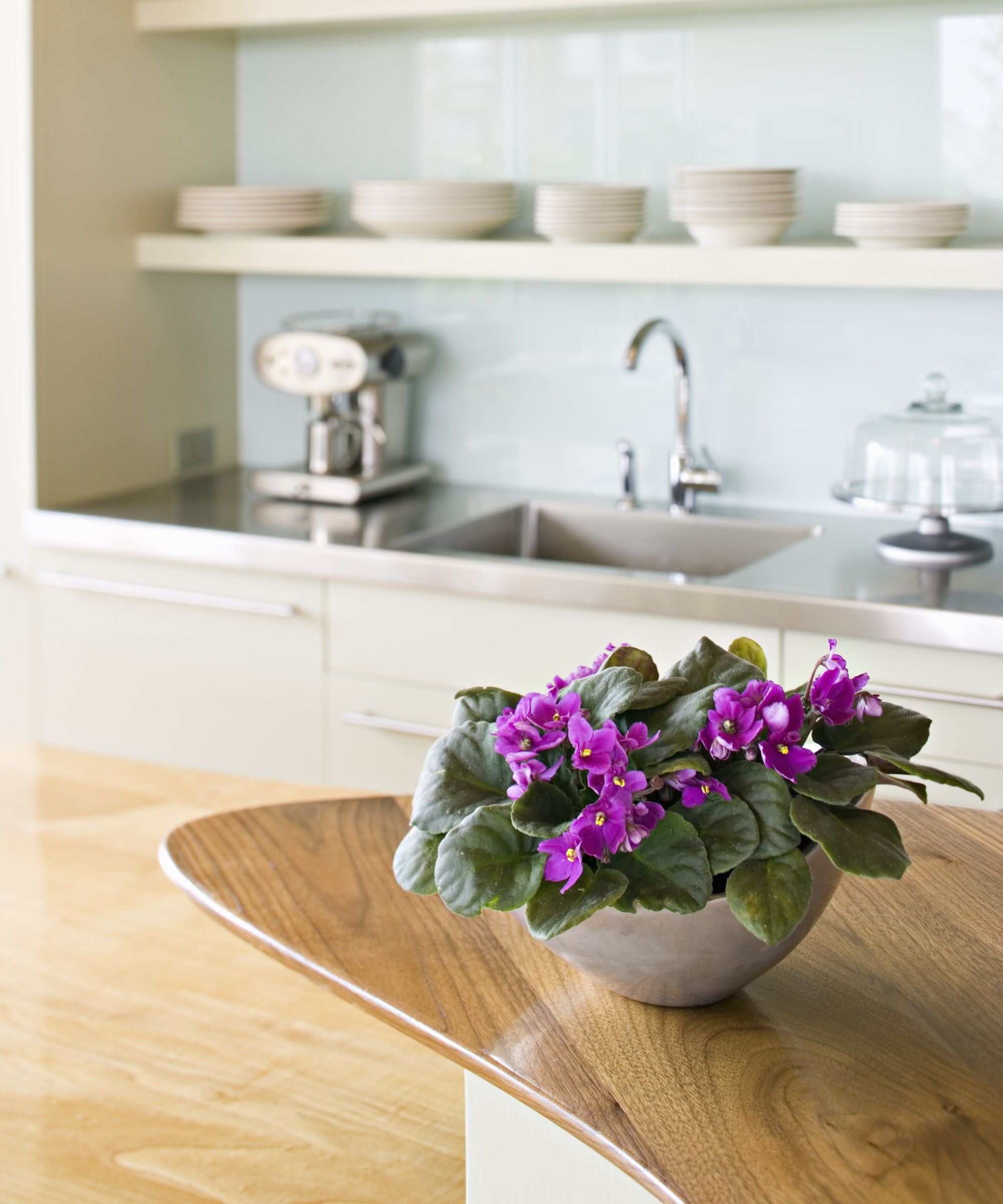
Generally speaking, African violets will be quite happy wherever they are placed but opting for a spot with lots of natural light will be beneficial for promoting brighter blooms.
'They prefer bright indirect light so they should be placed within one foot of southeast or west-facing windows. Direct sunlight can damage the foliage, whereas the lack of light can hinder flowering and growth,' says Vladan Nikolic, houseplant expert from Mr. Houseplant.
In their natural habitat, African violets are found thriving in partial shade, low to the ground among other vegetation. You can also grow them in your yard as outdoor container plants in the shade.
2. Avoid watering foliage

When it comes to how to water houseplants, a common mistake is not keeping a plant at the right moisture level. African violets like to have a consistent level of moisture without being over-watered, as this could cause discoloration and root rot.
'You want to avoid splashing water onto the leaves as African violets are susceptible to leaf scarring and diseases. Most plant parents bottom water these plants or use a narrow-spouted watering can to water around the foliage so it doesn’t splash onto the leaves,' says Paris Lalicata, head of plant education and community at The Sill.
You can find lots of indoor plant watering cans online, like this small watering can from The Sill.
It's a good idea to let the soil dry by around 50% before watering again. Just use your finger to feel if the top inch of soil is dry as an indicator.
3. Keep humidity high
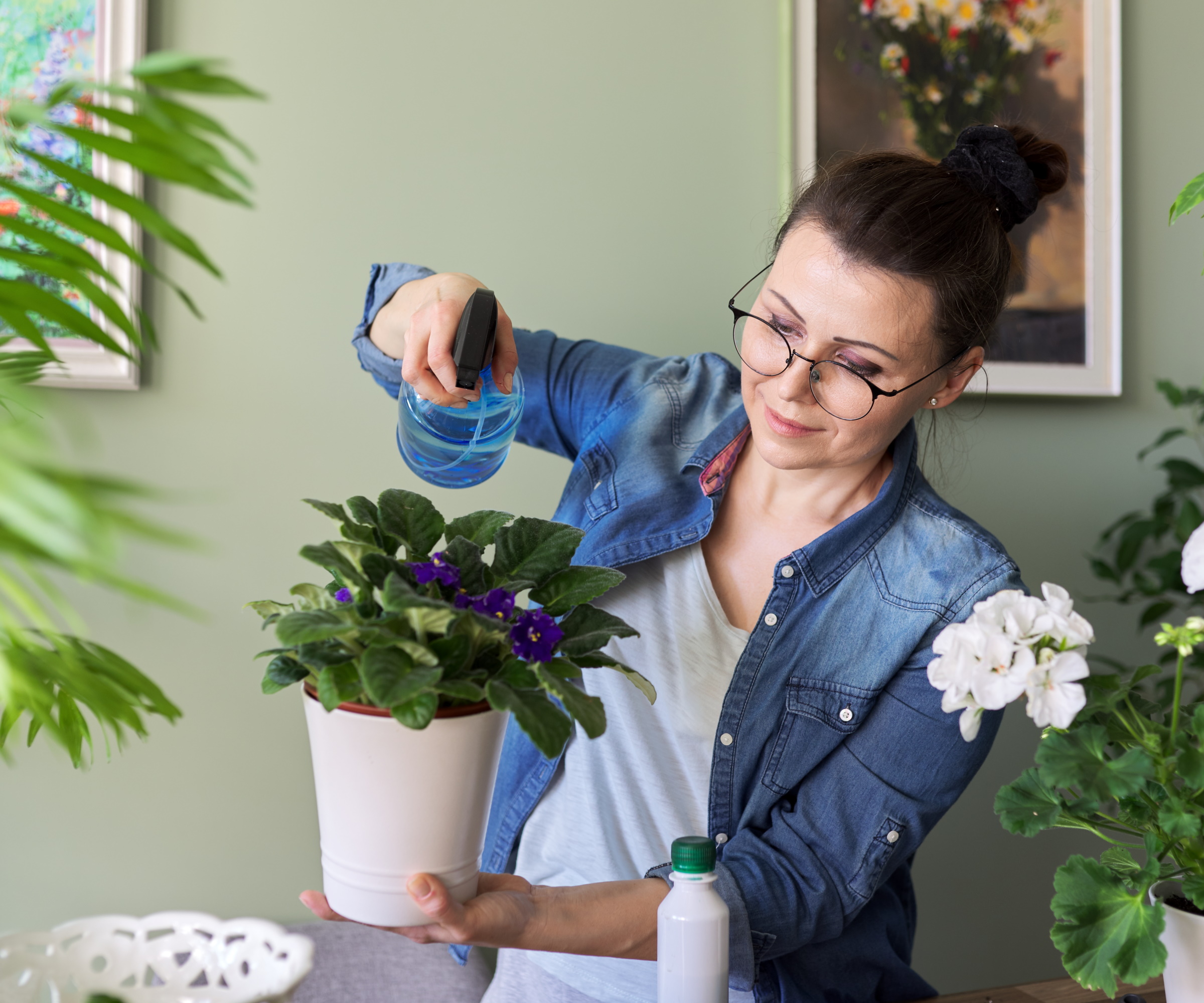
As indicated by its name, African violets are native to the warm climates of eastern African countries, including Tanzania. As a houseplant, they will enjoy higher humidity levels.
'African violets thrive in higher humidity, ideally between 60 and 80%. However, they will do well even in lower humidity' says Vladan.
You can increase the humidity for your plants by using a pebble tray like these humidity trays from Amazon, or regularly misting them like with this mister from Walmart. Be careful not to mist the leaves and petals of these compact plants too closely because it could cause permanent spotting.
'African violets grow best in temperatures ranging from 65°F to 80°F' says Vladan.
4. Deadhead after flowering
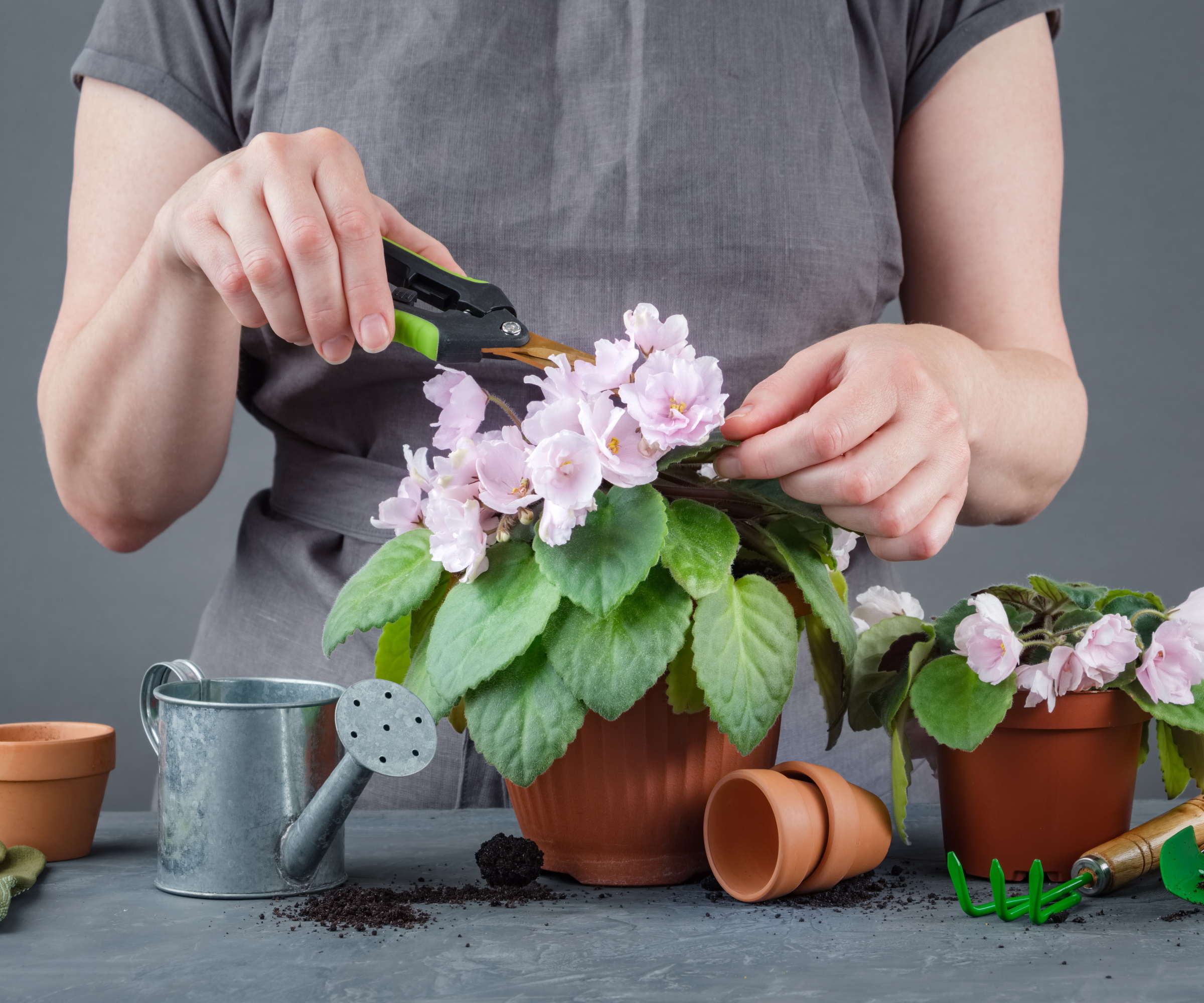
Like other flowering plants, African violets will bloom and flourish from deadheading.
'Deadheading is a process to prune off flowers as they become spent to prolong the blooming cycle or to help initiate a second flush of flowers. It basically prevents plants from going into seed if they were pollinated so the plant can continue to put out blooms during that cycle,' says Paris.
Using pruners, you can pinch off the buds of African violets once they have finished flowering and start to wilt and fade. It can help promote more growth and reward you with another round of beautiful blooms.
5. Repot if necessary
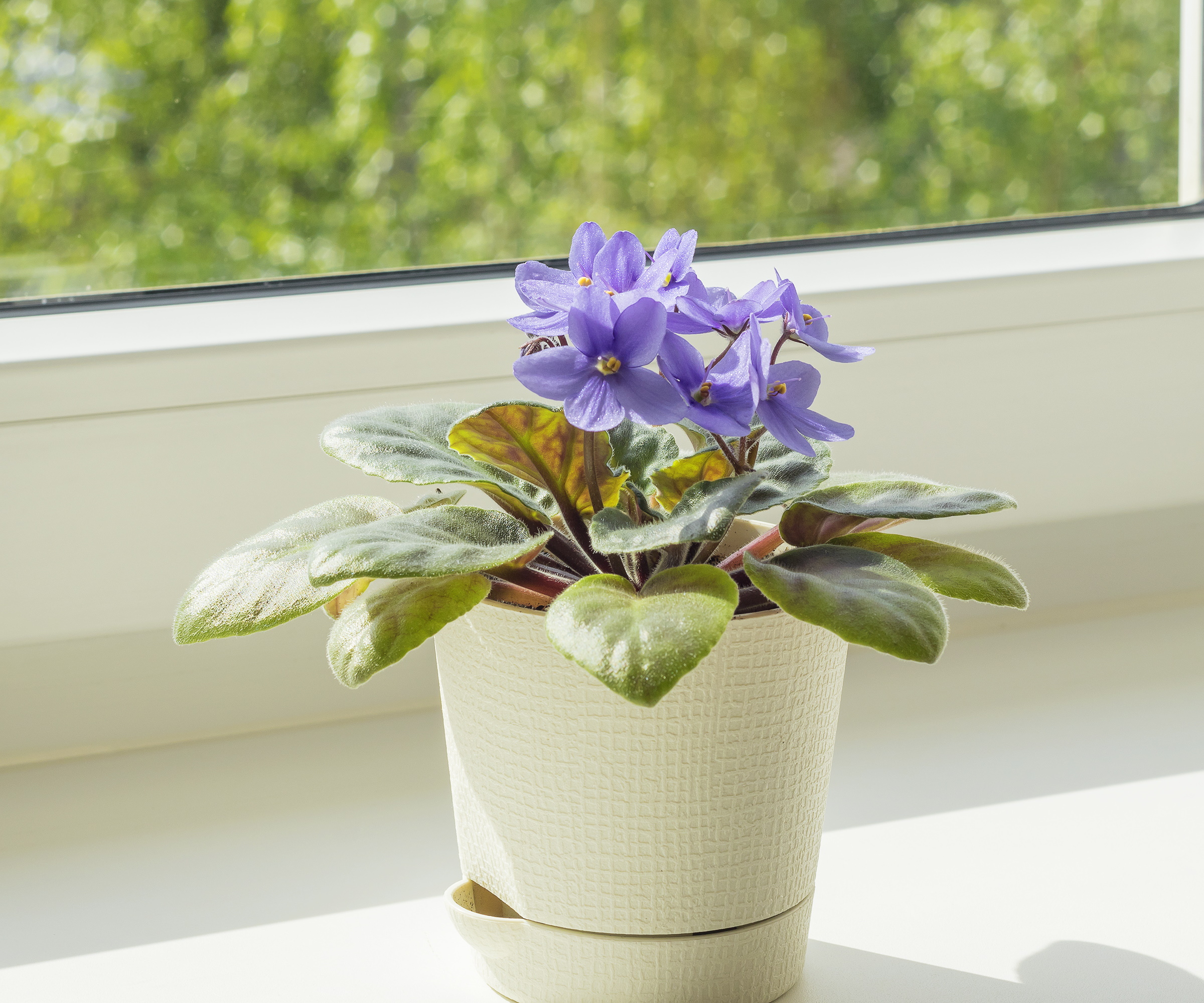
Although African violets will stay quite small and compact, it's important to repot them if they grow too big for their current container.
Indoor plant expert Lisa Eldred Steinkopf from the Houseplant Guru says to look out for your African Violet developing a long central stem. 'Your plant is telling you it's time to repot your violet, and this should happen yearly for best growth,' says Lisa.
Not repotting your plant could risk it becoming pot-bound, restricting growth and blooms. You can easily repot an African violet by simply moving it into a larger container, taking care to remove any dead foliage and roots and topping the new pot up with fresh African violet potting medium.
'African violets thrive in slightly acidic soil (pH 6.0 to 6.5), so you can first check the soil pH and if needed add dolomite lime to acidify the soil. You can also find a ready-to-go potting mix specifically designed for African violets,' says Vladan.
Shop African violet potting mix online
Potting mix blended with specific needs for African violets. Feeds plants for up to 6 months.
Slow release humates for strong root growth, eliminates transplant shock and has no damp off.
Semipermeable soil mix to help African violet roots gain access to fresh air and have longer-lasting blooms.
FAQs
How do you propagate African violets?
You can propagate African violets in different ways but the easiest method is by growing from leaf cuttings. It's best to choose fully grown leaves with a stalk and put them in compost, keeping them well-watered so that they root. In just a few weeks, new plants will begin to grow.
You can also propagate African violets by dividing clumps of rosettes. Simply remove the clump of plants from the main plant and pot up in compost. It will soon become an established plant.
Why have my African violets stopped flowering?
There are a number of reasons African violets may have stopped flowering, including light levels.
'To promote long-lasting blooms, make sure your African violet is getting enough bright indirect light for 10-12 hours a day. It also needs a period of darkness to produce florigen, a hormone in charge of flowering,' says Vladan Nikolic, houseplant expert from Mr. Houseplant.
When should I fertilize African violets?
You can fertilize African violets to help improve the nutrients in the soil and promote growth. The best time to fertilize is when you see the plant actively growing throughout the year.
'Use a fertilizer formulated for African violets and follow the instructions on the package. Don’t apply fertilizer to dry soil to prevent root burn. Moisten the soil before fertilizing the plant. Flush the soil once a month with plain room-temperature water to remove salt build-up,' says Vladan Nikolic, houseplant expert from Mr. Houseplant.
There are lots of fertilizers on the market, like this African violet fertilizer from Garden Goods Direct.
African violets are small, colorful flowering indoor plants that will add vibrancy to your houseplant collection. They are easy to look for and will provide you with long-lasting blooms throughout the year with just some essential care.







